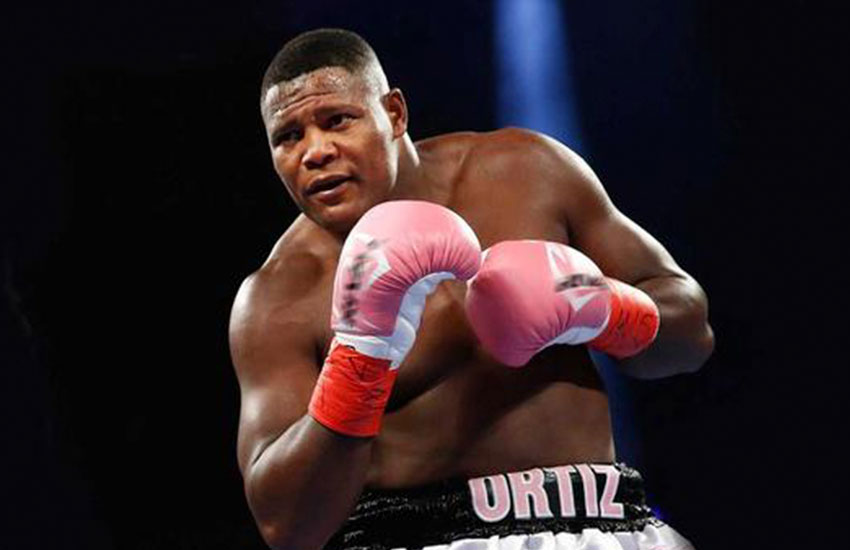Canada and USA
Congratulations to the WBC and VADA

The much-anticipated November 4, 2017, WBC heavyweight title fight between Deontay Wilder and Luis Ortiz appears to be off.
A urine sample taken from Ortiz during a random drug test conducted by the Voluntary Anti-Doping Association (VADA) on September 22 – two days after Wilder-Ortiz was formally announced – has tested positive for banned substances. More specifically, Ortiz’s “A” sample tested positive for chlorothiazide and hydrochlorothiazide, banned diuretics that are sometimes used to treat high blood pressure but are also used to mask performance-enhancing drugs.
The test was administered by VADA as part of the WBC Clean Boxing Program.
Ortiz previously tested positive for illegal drug use after a first-round knockout of Lateef Kayode in 2014. In that instance, a urine sample taken from Ortiz by the Nevada State Athletic Commission prior to the bout tested positive afterward for the banned anabolic steroid nandrolone. Ortiz was fined by the NSAC and suspended for eight months.
Ortiz also raised eyebrows on April 14 of this year when he pulled out of a fight against Derric Rossy scheduled for April 22 at Barclay’s Center, claiming that he had suffered a thumb injury while sparring on April 12. This injury was revealed shortly after Ortiz was advised that the New York State Athletic Commission had instructed him to be available for a random drug test because, as stated in the NYSAC directive, “Mr. Ortiz has previously tested positive for PEDs.”
Copies of the VADA report regarding Ortiz’s most recent positive test result were sent on Thursday to the Ortiz camp, the WBC, promoter Lou DiBella, Kim Sumbler (executive director of the New York State Athletic Commission), and Mike Mazzuli (president of the Association of Boxing Commissions).
VADA was founded by Dr. Margaret Goodman, who serves as its president and receives no compensation for her service to the organization.
The WBC Clean Boxing Program was inaugurated under the leadership of WBC president Mauricio Sulaiman. It requires all WBC champions and fighters ranked by the WBC in the top fifteen of any weight division to submit to random PED testing by VADA at any time. The WBC underwrites the direct cost of these tests.
Ortiz’s positive test result will hurt the WBC financially in the short run. A substantial sanctioning fee for Wilder-Ortiz has been lost. Also, it’s likely that some fighters who are “dirty” will avoid the sanctioning body for fear of being caught. However, clean fighters may well be more comfortable fighting for a WBC belt because of the increased likelihood that their opponents will also be clean.
Over the years, VADA has tested several hundred boxers, roughly five percent of whom have tested positive for the presence of a banned substance. In addition to Ortiz, fighters who tested positive include, most notably, Alexander Povetkin, Andre Berto, Lamont Peterson, Lucas Browne, and Brandon Rios.
VADA testing isn’t perfect. Given the random nature of drug testing and the sophistication of PED cheaters today, some WBC fighters might be dirty. But there’s a better chance that WBC fighters are clean than there is for the fighters who compete under the auspices of any other world sanctioning body.
The United States Anti-Doping Agency (USADA has also tested hundreds of professional boxers for performance enhancing drugs. How many of these tests have resulted in a positive finding of an illegal substance in a fighter’s system?
According to public statements by USADA, only one. On October 20, 2012, Erik Morales fought Danny Garcia at Barclays Center in Brooklyn. Two days before that bout, Halestorm Sports reported that Morales had tested positive for a banned substance. Thereafter, the New York State Athletic Commission acknowledged that, prior to the revelation on Halestorm Sports, the NYSAC had not been notified of the positive test by USADA. Garcia-Morales was allowed to proceed, which was a black eye for boxing.
As of today (Friday, September 29), the Ortiz camp is claiming that Ortiz took the banned diuretics to combat high blood pressure. There are multiple problems with this explanation: (1) Ortiz failed to previously state on required forms that he has high blood pressure; (2) Ortiz neither applied for nor received a therapeutic use exemption for the banned diuretics; and (3) there’s an issue as to whether a fighter with blood pressure so high that it that requires the use of chlorothiazide and hydrochlorothiazide should be allowed to fight.
Meanwhile, congratulations to the WBC and VADA for their honest efforts to make a dangerous sport fairer and safer.
Thomas Hauser can be reached by email at thauser@rcn.com. His next book – There Will Always Be Boxing – will be published by the University of Arkansas Press this autumn. In 2004, the Boxing Writers Association of America honored Hauser with the Nat Fleischer Award for career excellence in boxing journalism.
Check out more boxing news on video at The Boxing Channel.
-

 Featured Articles4 weeks ago
Featured Articles4 weeks agoThe Hauser Report: Zayas-Garcia, Pacquiao, Usyk, and the NYSAC
-

 Featured Articles3 weeks ago
Featured Articles3 weeks agoOscar Duarte and Regis Prograis Prevail on an Action-Packed Fight Card in Chicago
-

 Featured Articles2 weeks ago
Featured Articles2 weeks agoThe Hauser Report: Cinematic and Literary Notes
-

 Book Review2 weeks ago
Book Review2 weeks agoMark Kriegel’s New Book About Mike Tyson is a Must-Read
-

 Featured Articles4 weeks ago
Featured Articles4 weeks agoRemembering Dwight Muhammad Qawi (1953-2025) and his Triumphant Return to Prison
-

 Featured Articles7 days ago
Featured Articles7 days agoMoses Itauma Continues his Rapid Rise; Steamrolls Dillian Whyte in Riyadh
-

 Featured Articles3 weeks ago
Featured Articles3 weeks agoRahaman Ali (1943-2025)
-

 Featured Articles3 weeks ago
Featured Articles3 weeks agoTop Rank Boxing is in Limbo, but that Hasn’t Benched Robert Garcia’s Up-and-Comers


















